#Hanseatic City of Rostock
Text
16^12 Angora Civs "Roadmap" (0x12/?)



Welcome to the 16^12 referee guide...
Civilizations / cultures
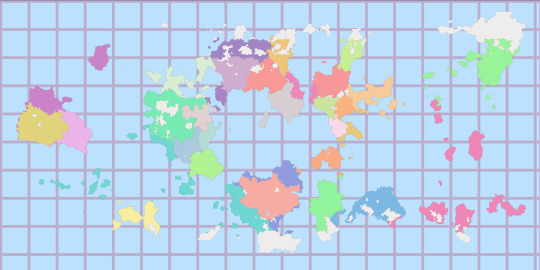

Starting point in Azgaar (From their maximum of 32 vanilla cultures at once...) [Super, Major, Minor tier ranks for Civ & City-States prioritization for Civ 5 scenarios-sake]
Utchewn (Shoshone Super Civ, Moson Kahni)
Marsch (Austria Major Civ, Wien)
Chunhau (Yue / Cantonese? Minor Civ, Guangzhou)
Samas (Samoa Super Civ, Apia)
Talyian (Persian Iran Major Civ, Persepolis)
Cao (Vietnam Super Civ, Hanoi)
Hwatcha (Korea Super Civ, Seoul)
May (Mayas Super Civ, Palenque)
Eqalen (Inuit Super Civ, Ivvavik)
Matwa (Swahili / Carib? Major Civ, Zanzibar)
Zebie (Carthage Super Civ, Carthage)
Mersuit (Sweden Major Civ, Stockholm)
Hugues (Scotland Major Civ, Edinburgh)
Aberku (Aremorici Super Civ, Darioritum)
Eyn (Sumer Major Civ, Ur)
Tabar (Morocco Super Civ, Marrakesh)
Tersun (Poland Super Civ, Warsaw)
Ibrad (Huron / Blackfoot / Basque? Major Civ, Ossossane)
Temu (Angola Super Civ, Luanda)
Sasson (Burgundy Major Civ, Dijon)
Treano (Italian / Netherlands Major Civ, Amsterdam)
Ishtar (Babylon Major Civ, Babylon)
Turchian (Turks? Major Civ, Edirne)
Medran (Spain Major Civ, Toledo)
Arela (Portugal Major Civ, Lisbon)
Hangzhou (Manchu? Minor Civ, Shenyang)
Palche (Incas Major Civ, Cusco)
Mangapu (Indonesia / Indian? Minor Civ, Jakarta)
Rzhev (Czech / Moravian / Slavic? Minor Civ, Prague)
Troporea (Minoans Major Civ, Knossos)
Lueur (Nubia / Mongolia? Minor Civ, Meroe)
Syrus (Assyria Super Civ, Ashur)
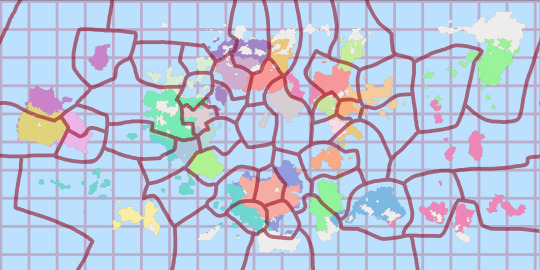
To the 48 cultures excluding the future's otherkin sapient clades...
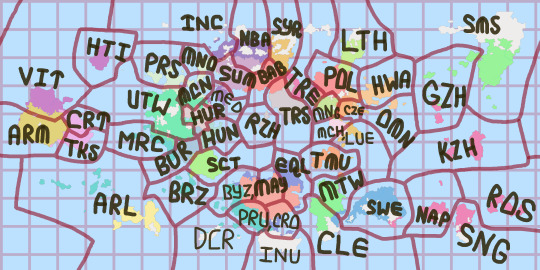
Hittites (Hattusa, Minor)
Byzantium (Constantinople, Minor)
Brazil (Rio de Janeiro, Minor)
Hungary (Budapest, Minor)
Myceneans (Mycenae, Minor)
Argentina (Buenos Aires, Minor)
Dene / Cree (Mikisiw-Wacihk, Minor)
Croatia (Zagreb, Minor)
Prussia (Konigsberg, Minor)
Hanseatic League / Mecklenburg (Rostock, Minor)
Chile (Santiago, Minor)
Kazakhs (Almaty, Minor)
Lithuania (Vilnius, Minor)
Two Sicilies (Naples, Minor)
Oman (Muscat, Minor)
Songhay (Songhai, Minor)
Just noting down that the map fully wraps around the X-axis, like a globe. ;-)
Religions
Pohakantenna (Shoshoni pantheon, quirky thanks to their "Daughters of Utchwendira" communion with the divine)
Angakkunngurniq (Inuit pantheon)
Confucianism / Shinto tradition?
Al-Asnam (serving as Aremorica's Celtic druidic-like pantheon over there, inspired by the classical era Galatians)
Ba'hai (monotheistic non-exclusive syncretism)
Arianism (iterated from the defunct Christianity dialect)
Chaldeanism (Mesopotamian pantheon)
Calvinism (derived from the Protestant Reformation’s Huguenot Southern French, monotheism)
Tala-e-Fonua (Samoan pantheon)
Hussitism (central slavic dialect of monotheism)
Jainism (communal humility & individualized Ki monks culture)
Buddhism (inner way reincarnation & large monasteries)
Judaism (the theological foundation of which most of the monotheistic faiths in this world agree upon nowadays)
Zoroastrianism (Iranian religion)
Ibadiyya (their Ba'hai like Islam is a very minor religion with a outsized impact here, just like Judaism is in our world)
Canaanism (Carthaginian belief system)
Pesedjet (Numidan Hieroglyphics belief system)
Mwari (Carib religion)
Intiism (Inca pantheon)
Tzolk'in (Mayan pantheon)
Have a great day ppl!
4 notes
·
View notes
Text
Germany is often associated with bustling cities like Berlin and Munich, but there are hidden gems in the northern region that are brimming with history and character. These cities are part of the Hanseatic League of Cities, and they offer a unique perspective on Germany's rich heritage. Here, we'll take you on a journey through Muenster, Osnabruck, Lubeck, and Rostock/Warnemunde, the four most underrated historic cities in Germany.
#backpacking guide for beginners#world travel guide#adventure travel blogs#thailand travel guide#best travel blogs#female travel bloggers#california adventure tips#europe travel blog#destination guide carmel#destination guide santa maria valley
0 notes
Photo

National Rubber Ducky Day
According to Sesame Street's calendar, January 13 marks the birthday of Rubber Duckie, the bathtub toy of Ernie. The day has since become celebrated as Rubber Ducky Day. Rubber Duckie first appeared on Sesame Street Episode 0078, on February 25, 1970; Ernie was in a bathtub in a room that resembled his living room, and sang the song, "Rubber Duckie." The most popular version of the song was sung by Ernie in Episode 0136, on November 16, 1970. This time he was in a bathroom with a plain blue background. Jim Henson was the real voice behind the song, and it went to #16 on the Billboard "Hot 100 Singles" chart in 1970 as well. Ernie, either by himself or with other characters, has sung other songs about his rubber duckie such as "Put Down the Duckie," "D-U-C-K-I-E," and "Do De Rubber Duck."
Rubber toys first appeared in the late 1800s, as the rubber industry began to grow. The first rubber ducks were not intended to float, but were instead made to be chew toys. A patent for a "Hollow rubber toy" was filed in 1925 and granted in 1928; it included a picture of a floating duck. Peter Ganine made a sculpture of a duck and then patented it. He filed for his patent in 1947 and received it two years later. Over 50 million of the ducks were sold. By the late 1940s rubber duckies were popular, but Ernie's "Rubber Duckie" song increased their popularity even more a few decades later.
Nowadays rubber duckies are usually not even made of rubber, but of thick vinyl instead, which is cheaper and more durable. Most are made to squeak and have a bright orange bill. They are sometimes made into characters; some are made to look like they have a profession, or are politicians or celebrities. Some wind up and "swim," while others glow in the dark, light up, or change color. The largest rubber duck was made by Dutch artist Florentijn Hofman in 2007. Its dimensions were 54ft x 66ft x 105ft, and it weighed about 1,300 pounds. Besides people making giant rubber ducks, some people also collect them.
Rubber duck races take place to raise money all around the world. When people sponsor a duck, money is donated to an organization. Ducks are dumped into a river or other body of water, and the first duck to cross the finish line wins a prize for its sponsor. Hundreds of rubber duck races are held in the United States and internationally. The largest one in the United States is the Freestore Foodbank Rubber Duck Regatta in Cincinnati, Ohio. The rubber duck was inducted into the Toy Hall of Fame in 2013. The Hall of Fame "recognizes toys that have inspired creative play and enjoyed popularity over a sustained period." New toys are added each year.
On January 10, 1992, close to 29,000 Friendly Floatees from a Chinese factory washed off a ship. Friendly Floatees are bathtub toys, and the ones that fell off the ship consisted of yellow ducks, blue turtles, red beavers, and green frogs. Two thirds of the toys floated south and ended up in Australia, South America, and Indonesia. The other third went up to Alaska and then circled back towards Japan. Many became trapped in Arctic ice in the Bering Strait. They moved through it at the pace of about a mile a day, and made it to the North Atlantic in 2000. Some arrived on the Eastern coast of the United States and Canada around 2003 and 2004, and most of the rest of them arrived in the United Kingdom in 2007.
How to Observe
The best way to celebrate the day is to take a bath with a rubber duck. You should also listen to "Rubber Duckie" and watch Ernie singing the song on Sesame Street. You could also look for rubber duck races to sign up for, and read Moby-Duck: The True Story of 28,800 Bath Toys Lost At Sea.
Source
#NationalRubberDuckyDay#RubberDuckieDay#National Rubber Ducky Day#13 January#big Rubber Ducky#everything is due south#Warnemünde#Hanseatic City of Rostock#Hansestadt Rostock#Germany#Deutschland#Mecklenburg-Vorpommern#Mecklenburg-Western Pomerania#summer 2020#original photography#travel#vacation#wall#roof
6 notes
·
View notes
Photo

Rostock, Germany
#Rostock#Germany#Deutschland#Mecklenburg Vorpommern#Mecklenburg-Vorpommern#Mecklenburg#Vorpommern#2017#Europe#Hansestadt#Hanseatic City
2 notes
·
View notes
Photo

The setting sun reflects at the bronze-cast griffin, Rostock’s trademark, that is guarding the entrance of the former town gate ‘Steintor’. (October 2017)
#rostock#griffin#steintor#baltic city#hanseatic city#deutschland#germany#town gate#landmark#sunset#october 2017#city photography#statue#german city#canoneos#teamcanon#canonphotography
2 notes
·
View notes
Text
The Hanseatic League and the Cog
The Hanseatic League was an association of trading cities in Northern Germany that did not only understand trade but also politics and culture. It began in the middle of the 12th century as a merchants' association that allowed its members to trade safely and to set prices in certain cities. These cities were Hamburg, Kiel, Lübeck, Stralsund, Gdansk and even Dortmund. Whereby Lübeck was given the headquarters.


The Hanseatic League 1400
In the middle of the 13th century, the merchants' association became an association of cities that expanded considerably, and cities such as Bremen, Rostock, Visby, Riga and so on were added. Each of the cities received special rules and prices, but the council in Lübeck also decided on trade embargo and wars. All in all, this trading alliance had 72 core cities and 130 loosely associated ones. This made it a huge and powerful alliance and so Denmark and Sweden often had to get to know the power of the Hanseatic League. Just like some pirates who lost their heads on a beach.

The execution of Klaus Störtebeker, the german Pirate, 1401
The Hanseatic League dominated the Northern European trade until the 17th century and was then replaced by the British and Dutch. In 1669 the Hanseatic League was finally dissolved, but this does not mean that you don't see any of this in the cities anymore. The town hall in Göttingen, for example, adorns all Hanseatic coats of arms of the cities belonging to it and many cities also bear the name Hanseatic City. Some of them even managed to become completely free and are now even a federal state in their own right, like Hamburg.

The Bremer Cog, an early one without the bow castle, 1380
The main ship of the Hanseatic League was the Kogge or Cog. A type of ship that was already in the 10th century in the flat Frisian area and showed up there as a trading ship. All in all, the Cog was kept simple, its hull was round and bulbous. The keel area was built in the caravel style (planks built on top of each other and the one between the two areas was caulked). While the hull walls were built in clinker construction (overlapping).

A mast and a square sail were added. Some also had a crow's nest. The quarterdeck had a castel and in the middle of the 14th century a bow castle was added. Late medieval cogs were about 20-30 m long and 5-8 m wide and had three masts. The sail area was about 200 m². According to tests with replicated cogs, the speed was about 3.5 knots at wind force 3 and 6 knots at wind force 6. Cogs could therefore sail faster than carts on land even in moderate winds.

Hanseatic league flagship Adler von Lübeck (1567-88), Model in the Town Hall in Lübeck
Cruising was probably only possible in light winds, as the ships were relatively wide for their length. On the other hand, a cog with a comparatively small crew could transport large quantities of cargo.
In the 15th century, however, a slow change to the much larger and faster caravels began.
#naval history#medieval#seafaring history#cog#10th -17th century#hanseatic league#ship typ#sorry there are not so many pretty pics about these era
327 notes
·
View notes
Photo

Hanseatic City of Rostock, Mecklenburg-Western Pomerania
1 note
·
View note
Text
Day 49, 8th Oct, Rostock
On the move again. This time by train to Rostock which is up on the north coast of Germany. I haven’t been in this part of Germany before so I thought it was a good chance to explore this area. It was pretty grey and a bit wet as I left Berlin and it only got worse as I travelled north. Blue skies and sunshine make such a difference. Once I dropped my bags I headed back to the station to catch the S Bahn to Warnemunde, a resort town, at the entrance to the port of Rostock. Luckily everywhere I have stayed have let me into my room early but I’m happy if I can just drop my bags as I’m usually straight out the door.

Warnemunde was a surprise. There were only a few locals on the train which only takes about ten minutes from the centre of Rostock and it didn’t look like much when I first arrived but around the corner there were people all over and lots of colour. It is a fishing port as well as a resort town with pleasure boats and tourist boats catering for the holiday makers. The port is also important for Germany’s economy.

The style of the buildings were very unique to this area. I enjoyed a bit of a look in the shops. I nearly bought a rain coat which I thought might be handy in my van.

Big ferry ships between countries come into this port as well. A Swedish one was leaving in the distance. The port is also connected to Denmark by ferry.

It’s school holidays so there were a lot of families around.

The entrance to the harbour has one red and one green lighthouse on the breakwaters.

A sailing race started as I was walking along the breakwater. They were really travelling as there was a bit of a wind behind them.

The beach was popular and the sand looked almost as good as you find on our beaches. A few kites were flying.

Beach chairs packed up for winter. Further along the beach were big hotels and more beach chairs.

This lighthouse was built in 1897 to 1898.

Away from the beach were lovely streets filled with quaint houses.

Many of the houses were hotels or apartments for rent.

The bright colours brightened up a dull day.

Back in Rostock which proved to be another interesting city. Rostock is the largest city in the German Federal state of Mecklenburg-Western Pomerania. Rostock was the largest coastal and most important port city in East Germany. The port of Rostock is still the fourth largest port in Germany and the largest port on the German Baltic coast.
Part of the original city walls still exist and the Stainton is one of the gates that still remain.

St Mary’s Church Marienkirche is an imposing Brick Gothic church. It was built in the 13th Century. The huge tower was only completed at the end of the 18th Century.

The Neuer Markt which started in the 13th Century is surrounded by original, carefully restored gable houses from the 15th and 16th centuries. Some historical houses in the Hanseatic style were destroyed in an Allied air raid in 1942.

The Rats Apotheke is an original pharmacy operating in this one location for centuries.

The Rathaus is as old as the Neuer Markt but doesn’t look it as in the 18th Century the facade was damaged in a storm and was replaced with a new Baroque design. You can still see the set of seven Gothic turrets capping the roof from the 13th Century.

Most unique shaped buildings are original which makes them more amazing. They are scattered in among newer buildings.

The Kropoliner Tof. Rostock’s defensive walls were first built in the 1100′s and then added to in the 16th and 17th centuries. Only four of the original twenty medieval gates remain.

The main pedestrian area.

All over the Old Town are great examples of Hanseatic style of architecture.

The university building is at the end of the main shopping area. The Rostock University was founded in 1419.

This house was typical of the houses near my hotel which was in a similar style. My room was up in the ceiling. Luckily the girl carried my bag up.

The weather wasn’t the best today but I got to see a bit of both of these towns and managed to avoid the rain and even had a few glimpses of sunshine.
4 notes
·
View notes
Text
About Vicke Schorler
In the outgoing middle ages, the North German city Rostock had come into great prosperity and prominence as part of the Hanseatic League, a prominent confederation of merchants and cities which operated throughout Nothern and Central Europe from the 13th to 17th centuries.
Viecke Schorler was born in the mid-16th century. He must have been only 18 years old when he started working on his legacy: A scroll depicting his city in meticulous veduta, about which you may read more here. Through marriage, he came into the means necessary to be a grocer, and included in the one hundred brewers, artisans, and merchants which represented the city's people in politics. He spent decades of his later life writing a chronicle of major events - natural catastrophes and fires, weddings and the deaths of notable people, as well as econimic, political, and cultural goins-on - and died sometime in 1625 or 1626.
His name had slipped into obscurity by the time his scroll, which had changed owners a few times the previous centuries, was among the pieces rediscovered in the city archives when interest in cultural history rose in the late 19th century. It is since recognized as an important historical artifact and primary source, and even aided in the reconstruction of historical buildings in the old town after WWII.
0 notes
Text
The 4 Most Underrated Historic Cities in Germany!
Germany is often associated with bustling cities like Berlin and Munich, but there are hidden gems in the northern region that are brimming with history and character. These cities are part of the Hanseatic League of Cities, and they offer a unique perspective on Germany's rich heritage. Here, we'll take you on a journey through Muenster, Osnabruck, Lubeck, and Rostock/Warnemunde, the four most underrated historic cities in Germany.

1. Muenster: Germany's Cycling Capital
Just an hour and 20 minutes by train from Dusseldorf Airport Station, Muenster is a city that deserves a 2-3 day stay. The historic marketplace, Prinzipalmarkt, is a must-visit, and during the summer, the Aasee offers a solar boat ride to the All-Weather Zoo, known for its conservation efforts. The renovated Hafen (harbor) is perfect for dining and entertainment, and Muenster is home to the first and only Picasso Museum in Germany.
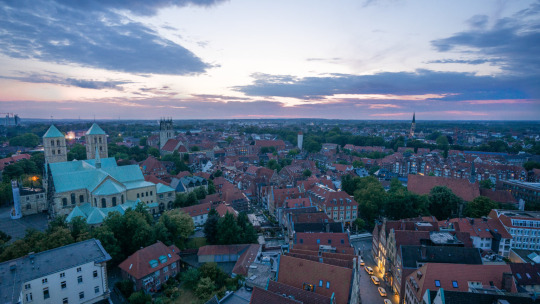
2. Osnabruck: A Journey to the Past
A short 20-minute train ride from Munster; Osnabruck transports you to medieval times. The city hosts a wine festival in early August and boasts a captivating Botanical Garden for research enthusiasts. The Felix Nussbaum Museum displays the works of a renowned German-Jewish artist and recounts his harrowing experience during the Holocaust.

3. Lubeck - The City of the Seven Spires
Lubeck stands out with its stunning Brick Gothic architecture, surrounded by the river Trave. The European Hanse Museum is the world's best-engaging museum dedicated to the Hanseatic League's history. Don't miss Lubeck's marzipan, with a visit to Niederegger, where you can see life-sized marzipan statues. Explore the charming alleyways and visit St. Mary's Church, Germany's third-largest church. A harbor cruise and the Duckstein festival by the river complete the experience.

4. Rostock and Warnemunde: Seaside Delights
Rostock is a short train ride from Lubeck, and from there, a quick transfer takes you to Warnemunde, a beloved seaside resort. In mid-August, the Hanse Sail Festival showcases the city's maritime heritage. Explore the iconic lighthouse and the Teapot restaurant, famous for seafood. You can also take a ferry from Warnemunde to Rostock to explore Germany's oldest university town.

Concluding Remarks If you seek an authentic slice of Germany, away from the crowds of Berlin and Munich, these historic cities in the north offer an unforgettable experience. Let Preethi, the dedicated travel blogger and photographer from TheEagerTraveler.com, guide you towards your next remarkable adventure. Explore the hidden treasures of Muenster, Osnabruck, Lubeck, and Rostock/Warnemunde and immerse yourself in Germany's rich history and culture.

#4 Most Underrated Historic Cities in Germany#Muenster: Germany's Cycling Capital#Osnabruck: A Journey to the Past#Lubeck - The City of the Seven Spires#Rostock and Warnemunde: Seaside Delights#world travel guide#thailand travel guide#backpacking guide for beginners#adventure travel blogs#europe travel blog#destination guide carmel#female travel bloggers#best travel blogs#destination guide santa maria valley#california adventure tips#california#travel#tour
0 notes
Photo










Rostock (No. 2)
In the 11th century Polabian Slavs founded a settlement at the Warnow river called Roztoc (*ras-tokŭ, Slavic for “fork of a river”); the name Rostock is derived from that designation.
The Danish king Valdemar I set the town on fire in 1161. Afterwards the place was settled by German traders. Initially there were three separate cities:
Altstadt (Old Town) around the Alter Markt (Old Market), which had St. Petri (St. Peter’s Church),
Mittelstadt (Middle Town) around the Neuer Markt (New Market), with St. Marien (St. Mary’s Church) and
Neustadt (New Town) around the Hopfenmarkt (Hop Market, now University Square), with St. Jakobi (St. James’s Church, demolished after World War II).
In 1218, Rostock was granted Lübeck law city rights by Heinrich Borwin, prince of Mecklenburg.
Source: Wikipedia
#Hanseatic City of Rostock#Hansestadt Rostock#Mecklenburg-Vorpommern#summer 2020#original photography#travel#architecture#cityscape#vacation#Mecklenburg-Western Pomerania#Kerkhoffhaus#façade#exterior#Standesamt und Archiv der Hansestadt Rostock#terra cotta#Renaissance#Bartold Kerkhof#detail#Große Wasserstraße 30#Wollenweberstrasse 51#Europe#Germany#Deutschland
11 notes
·
View notes
Photo

Rostock, Germany
#Rostock#Germany#Steintor#Ständehaus#Ständehaus Rostock#Standehaus#Oberlandesgericht#Rosengarten#Rostocker Rosengarten#Deutschland#Hansestadt#Hanseatic City#Mecklenburg Vorpommern#Mecklenburg-Vorpommern#Mecklenburg#Vorpommern#2017#Europe
3 notes
·
View notes
Photo



When I returned home tonight, I saw this amazing skyscape over Rostock: the end of a literally whole day of rain. Unfortunately, I just had my smartphone at hand to take some pictures, but... that’s life, hehe. (July 2017)
(The first picture was taken in the Kröpeliner Straße (’Kröpeliner Street’), the second one shows St.-Mary’s-Church and on the third you see the sunset in the harbor of Rostock.)
#rostock#germany#deutschland#harbor#church#cathedral#st marys church#sunset#summer sunset#sky#skyscape#snapshot#mecklenburgvorpommern#mecklenburg-vorpommern#mecklenburg#vorpommern#baltic city#hanseatic city#july 2017
15 notes
·
View notes
Text
Drug raid in Rostock: three arrest warrants issued | NDR.de - News
Drug raid in Rostock: three arrest warrants issued | NDR.de – News
[ad_1]
As at: 01/30/2020 04:34 PM
–
NDR 1 Radio MV
Enlarge image
Officials from the Special Operations Command (SEK) were also involved in the raid. (Archive)
In the Hanseatic city of Rostock and the surrounding district, around 250 police and customs officers searched 27 objects as part of a drug raid and arrested four suspects. The Rostock Local Court issued arrest warrants against…
View On WordPress
0 notes
Text
Adventure #5: June 7, Tallinn, Estonia: Fortresses, cobbled streets, and herring???? June 8: Sea Day #3 June 9: Warnemunde, Germany: Sausages and Clocks
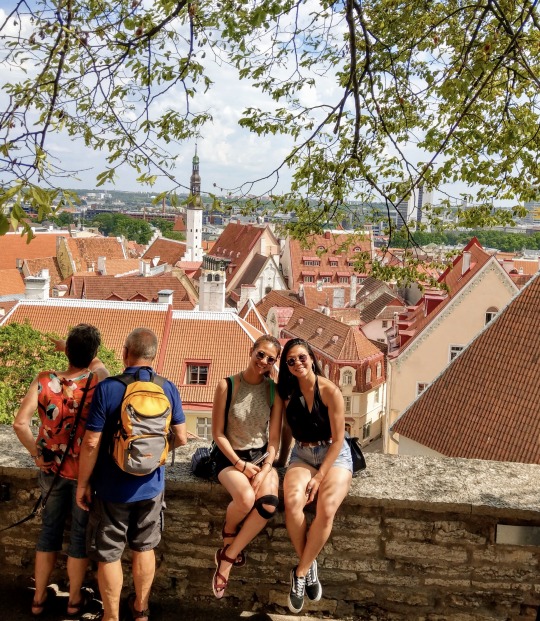
This stop on the cruise was one of the shortest ones (we had to be back on the ship by 4 pm), so we woke up early to have breakfast so that we could be off the ship as soon as the gangway was open for disembarkment. After purchasing shuttle bus tickets into the city we headed out to see the fortress “Kiek en de Kӧk” that the city was best known for. We got a little turned around for a bit which my dad was upset about for a bit, but eventually, we were able to locate Old Town. It was amazing to see a medieval city so well preserved in the center of a modern city; it was like a small pocket of the past amidst the present. All of sudden the streets were cobblestone instead of cement and we were surrounded by towering walls with watchtowers and old stone buildings.
Tallinn, a trading city on the Baltic Sea dates back to the 13th century and is a registered UNESCO World Heritage site. While Old Town is a historic landmark and a popular place for tourists to visit, it still functions much as it did back in the day with people living and working there as well as having commercial and religious functions.
As we wandered around Lower Old Town, we stumbled upon the entrance to the famed Town Wall. My parents didn’t want to join my sister and I, so we climbed to the top of the wall while they watched for us from down below. The steps were really steep and slightly slippery from years of being worn down by constant foot traffic. While we were up there, we were able to see this gorgeous view overlooking Old Town. We visited the Stout Margaret Tower (Paks Margareeta), a cannon tower that is best known as “Fat Margaret”. They say that the tower got its name from a large cannon that it housed or from a cook named Margaret who used to work there. It was funny going up there with my sister because she is deathly afraid of height. Every time that she thought I got too close to the railing or leaned over too much, she would start freaking out. I definitely got some butterflies in my stomach from how high up we were, but being the younger sister, of course, I had to mess with her a little bit. It’s safe to say that by the time we climbed down, she was stressed and sweaty.


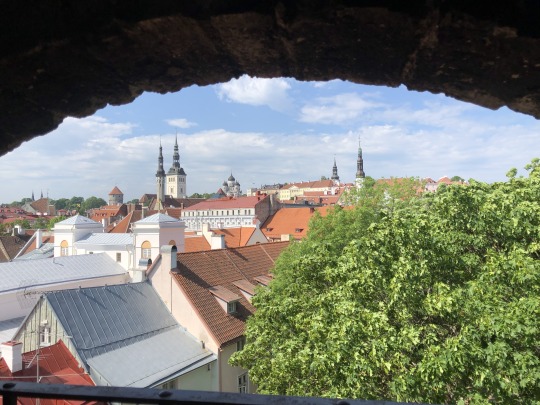
After spending some time on the wall, we walked around for a bit longer, looking at the various highlights on the map before grabbing lunch at this pub. There were so many drinks that we wanted to, and since we were only going to be there for the afternoon, of course, we ordered everything we wanted: juniper beer, a le coq beer, a local pale ale, passion fruit cider, and rhubarb lemonade. We also ordered some herring, something that my dad and I had been wanting to try for a while after seeing it on various travel shows. Herring is a popular dish in Scandanavia and is served many ways, and the one that we wanted to try was raw cured herring. I was not a fan. It was served with fried potato balls and a garlic cream sauce. The flavor was salty and very fishy and a little bit slimy. The funniest bit was watching my sister try it, who is not a fan of fish to begin with. She dunked the smallest piece of fish in the sauce and was writhing as she put it in her mouth; she refused to chew it and then swallowed it whole. In comparison, the savory chicken mushroom cheese pancakes that we ordered were very yummy. They were more like crepes rather than American style pancakes.


youtube
After lunch, we walked around some more, without anything particular in mind. Most of the buildings or landmarks worthy of note were on Toompea Hill, which was actually a bit of a steep walk. In Palace Square, there was Saint Alexander Nevsky Cathedral, a Russian Orthodox church built in 1900. It looked so much like the churches that we saw in St. Petersburg.

The highlight of my day was really freaking my sister out while looking out over one of the oldest medieval towns. Next to one of the lower parts of the fortress, my family and I were looking at the Toompea Park down below and I asked my mom to take a picture of me laying on the wall, but my sister got scared and tried to pull me down. My mom got the picture mid-pull. I couldn’t breathe from laughing so hard.
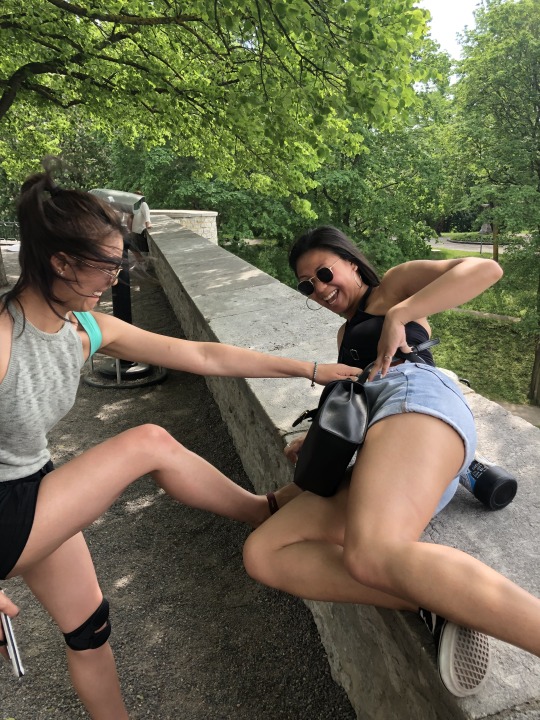
After walking around a hilly, cobbled city, we were pretty tired so we headed to the shuttle so we could go back to the ship. Because we went back to the ship early, we were back in time to make it to tea-time. Princess Cruises has tea time from 3 pm to 4 pm every day. They serve finger sandwiches, scones with clotted cream and jam, small pastries, and English tea with sugar and cream. On previous cruises, we always looked forward to going to tea time for the scones with clotted cream and jam. After tea time with my parents, I headed up to the pool deck to read outside, then later moved to the piazza in the center of the ship to listen to the string quartet perform.
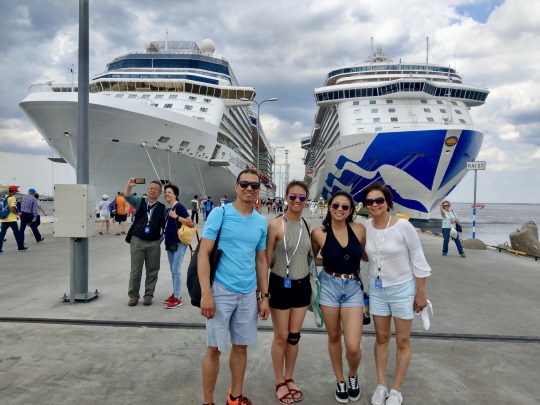
Our night ended much like it did the other nights. At dinner, we ordered everything new (of course) and then listened to the performers in the piazza before heading to the karaoke lounge.

June 8 - Sea Day #3
Having a sea day after 3 days of non-stop touring, it was nice to be able to sleep in and get some rest. I slept into the afternoon and then grabbed some lunch with my parents. On sea days, there is usually a lot of activities to do on board but I usually like to spend my time reading or watching whatever is on the jumbotron on the pool deck. That evening, they would be hosting the formal night and everyone would dress up in tuxedos and evening gowns. Because we were grabbing dinner with the Flores’, we got ready earlier so we had enough time to take pictures before dinner.


Dinner with them was a riot and we were stuffed full of escargot and lobster. After our usual time at the karaoke lounge, we joined the dance party in the piazza and stayed there until we all headed to bed.
June 9: Warnemunde and Rostock, Germany
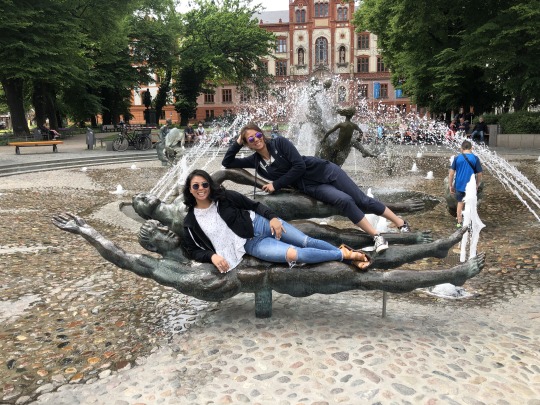
Our 9th day on the cruise, we docked in Warnemunde, Germany. Because the ship would be docked until 9 pm that night, we weren’t too fussed about waking up early to head into town. This port was where cruises docked so that passengers could take a bus to Berlin about 2-3 hours away. We already planned on going to Berlin after the cruise so we instead spent our time going around Warnemunde and Rostock, a 15-minute train ride from the port city.
We started our day off going to Rostock. Rostock is a Hanseatic City that is considered often referred to as the “Gateway to the North”. True to its description of being a quaint town, many of the buildings were in an older style and just overall, very European-looking. We didn’t really know too much about the city before coming here, so we spent most of our time wandering around. There were a bunch of clothing and shoe stores lined along the way, however, because it was Sunday, almost everything was closed and the city seemed a little deserted.
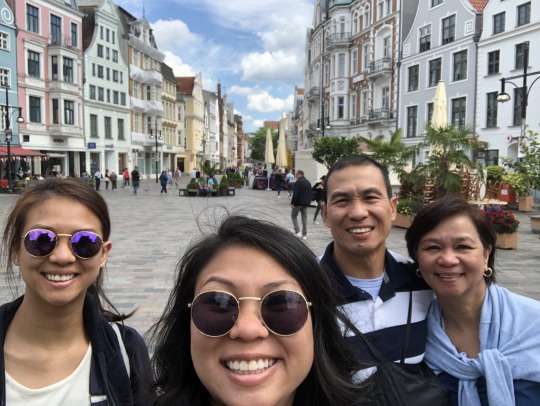

As we walked around, we spotted a food stand selling sausages and currywurst, both of which I am a big fan of. My aunt married a German, so growing up, I ate a lot of German food because I was always spending time with my cousins, so of course, when I saw the sign of currywurst I had to get some. Currywurst is basically sliced sausage topped with curry powder that you dip in curry ketchup; we also ordered a Rostocker, the local sausage. We were shocked when the man handed us the Rostocker because the sausage was ginormous but the bread it was served in was the size of a dinner roll. I didn’t end up liking the Rostocker because it was so porky, but the currywurst was quite tasty.

We wandered into one of the older, larger churches, Saint Marien-Kirche, where we stumbled upon my favorite thing that day: The Astronomic Clock of 1472. The clock was built by Hans Düringer, a master clocksmith from Nuremberg. The clock shows, hours, days, months, years, phases of the sun and moon, and the Zodiac. The clock had computation of the dates of Easter up until 2017 but was updated in 2018 to add on more years. This is the oldest and last working astronomical clock from the Middle Ages that still tell the time, date, and more. The highlight of the clock is at noon when there is a procession by the Apostles. The Apostles circle Christ, then file through a door that is supposed to represent heaven, and just before Judas enters, the doors close and he is left outside. It was so cool that we were actually there at noon when the procession occurred.

After our time at the church, we headed back to Warnemunde to wander around there as well. It was a cute coastal town with restaurants and cafes up and down the marina. We wandered in and out of some of the shops that were open and tried fried fish sandwiches at one of the boats docked there.

By 4 pm we were done walking around and headed back to the ship to get a little bit of rest before dinner, which was, as usual, very filling and entertaining.
1 note
·
View note
Text
The Hanseatic City of Lübeck
For centuries, trade in northern Europe was dominated by the Hanseatic League (Hanse or Hansa for short). A powerful defensive and economic alliance made up of city-states along the coast of the Baltic Sea. The Hansa left a great cultural and architectural heritage that is still noticeable today when visiting the cities that made up the league. Cities in the league included Hamburg, Wismar, Rostock, Szczecin, Berlin, Gdańsk, Kaliningrad and Tallinn.
So what did they trade? Mostly high quality goods from the west such as: cloth, spices and wine, and raw minerals and products from the north and east, including: salt, furs, herring and copper.
This trade made cities in the league filthy rich, and Lübeck, the de-facto capital of the Hansa, became (arguably) the richest city in Europe. Huge churches, large gates, and beautiful brick Gothic architecture are indicative of Lübeck’s once immense wealth.
The Hansa, whilst powerful in the Baltic, was unprepared to deal with the opening of Atlantic trade routes, and cheaper goods from other parts of Europe. Eastern Baltic traders started to bypass Lübeck, and trade directly with cities like London and Amsterdam. The 30 Years War weakened the Hansa substantially, and much of Pomerania was ceded to Sweden. In 1669, members of the Hansa met for the final time, and confirmed the league’s demise.
Modern Hanseatic connections are easy to come by. Many Dutch and Northern German cities still refer to themselves as ‘Hanse Cities’. Lübeck, Bremen and Hamburg, all have the title “Free and Hanseatic City” (Freie und Hansestadt). Their past as city-states is why many of them, still are. Bremen and Hamburg are still separate states in modern Germany. The exception is Lübeck. Until 1937, it was a separate state (Reichsgau) in Nazi Germany. However, Hitler personally hated the city because the state’s Senat wouldn’t allow him to speak during his 1932 election campaign. So, in 1937 the state was merged with the Reichsgau of Schleswig-Hostein. It didn’t become a city-state again after World War 2, instead remaining a part of Schleswig-Hostein.
Oh, and the ‘lingua franca’ of the Hansa was Middle Low German. The ancestor of modern Low German (Plattdeutch in Standard German. Platdüütsch in Low German).
I myself, have been to Lübeck, and I will share some photos that I took!

A standard street in Lübeck, near the Marienkirche, a large Church in the centre of the city.

The Marienkirche, constructed between 1250 and 1350.




Photos of the Rathaus Lübeck, the town hall. Built in 1230 (But taking many years before acquiring its current look. The basic design of the building was copied by many other Hansteatic Cities in their town halls.

Inside the Town Hall.





Assorted photos.

The Holstentor, probably Lübeck’s most famous symbol, the only city gate still standing. There is actually a really cool museum inside!



Views of Lübeck from the top of St Petri Church, which has a viewing platform open to the public.
My apologies for the time between posts. I got swamped with Uni work this past week.
14 notes
·
View notes